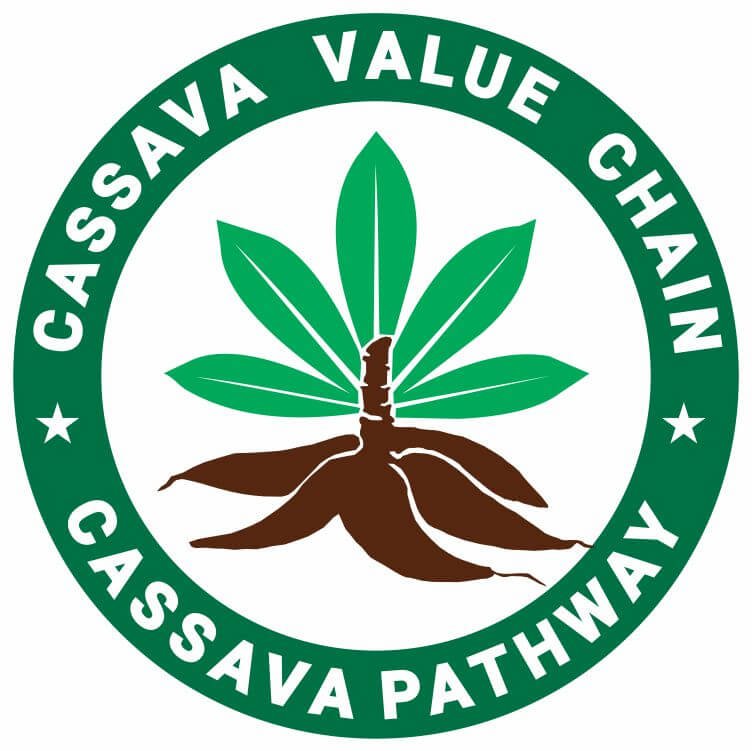Cassava flatbread brings you traditional South American and Caribbean flavors, offering gluten-free, versatile options perfect for snacks, meals, and creative culinary adventures.
Thin and soft, it cooks quickly on a pan or griddle, making it perfect for wrapping fillings, serving alongside stews, or absorbing sauces.
Unlike denser cassava bread, its texture gives you options in the kitchen while keeping its shape.
In West Africa, Latin America, and parts of Asia, families gather to make it together, sharing recipes and techniques passed down through generations.
By preparing cassava flatbread yourself, you connect with a living tradition, enjoy a versatile side or snack, and bring a taste of culture to your table with each fold and bite.
What is Cassava Flatbread?
Cassava flatbread is a traditional gluten-free cassava bread made from grated cassava or flour. It can be thin and crispy or soft and pliable.
Some varieties ferment for a tangy flavor. Known as beiju in Brazil and casabe in the Caribbean, it is cooked on a hot surface, offering a versatile, culturally rich alternative to other cassava-based breads.
Types of Cassava Flatbread
Cassava flatbread can be prepared in two main ways: either using cassava flour for a smooth, flexible texture or grated cassava for a traditional, slightly coarse feel.
Cassava Flour-Based Cassava Flatbreads
Cassava flour-based flatbreads are made by mixing cassava flour with water and a pinch of salt to form a soft, workable dough.
The dough can be shaped into rounds or thin discs, then cooked on a skillet or griddle until lightly browned.
This method produces a flexible, tender bread that can be used for wraps, sandwiches, or served alongside sauces and stews.
Its smooth texture and neutral flavor make it easy to pair with both savory and sweet dishes, giving you endless culinary options.
Grated Cassava-Based Flatbreads
Grated cassava-based flatbreads are prepared by finely grating the cassava root and pressing out excess moisture.
The resulting mixture is shaped and cooked on a hot surface until slightly firm and crisp on the edges while remaining tender inside.
This traditional method produces a rustic texture and a naturally earthy flavor.
They are ideal for pairing with dips, stews, or savory toppings, providing a slightly chewy bite that highlights the natural character of cassava and preserves the authentic taste passed down through generations.
Related Posts
Regional Variations of Cassava Flatbread
Cassava flatbread has traveled through cultures and kitchens, taking on distinct forms in South America and the Caribbean.
Each regional variation reflects local ingredients, preparation methods, and flavors that make this bread a culinary staple.
Venezuelan Casabe
In Venezuela, casabe is a thin, crisp flatbread made from grated cassava. You can prepare it fermented or non-fermented.
Fermented casabe develops a tangy, complex flavor, while the non-fermented version has a milder taste.
This bread is perfect for pairing with stews, meats, or spreads and remains a core part of traditional Venezuelan meals.
Brazilian Beiju
Beiju is a Brazilian cassava flatbread made by toasting finely grated cassava on a hot surface.
Its slightly chewy texture allows you to enjoy it with sweet or savory fillings like cheese, coconut, or chocolate.
Typically served for breakfast or as a snack, beiju reflects Brazil’s blend of indigenous, African, and Portuguese culinary influences.
Colombian Arepas de Yuca
Arepas de yuca are soft, chewy flatbreads made from yuca flour.
You can grill, bake, or fry them, and they work as a base for toppings or fillings.
This bread provides a gluten-free alternative to corn arepas and is a beloved part of Colombian households, showcasing cassava’s adaptability in everyday meals.
Dominican Cassava Flatbread
In the Dominican Republic, cassava flatbread is often thin and crisp, similar to casabe.
It is made from grated cassava, pressed, and cooked on a flat griddle.
Some recipes incorporate local spices or herbs, giving them a subtle flavor twist.
This bread is enjoyed with meats, fish, or stews, highlighting its cultural and communal importance in Caribbean cuisine.
How to Make Cassava Flatbread
Making cassava flatbread at home is simple and rewarding.
You need cassava flour, warm water, and a pinch of salt, with optional herbs or spices for added flavor.
Start by mixing the flour and salt, then gradually add warm water to form a smooth dough.
Knead briefly and let it rest for 15 to 30 minutes to improve texture and flavor.
Divide the dough into small portions and flatten each with your hands or a rolling pin to your preferred thickness.
Cook the flatbread on a medium-heated skillet or griddle for 2 to 3 minutes per side until lightly browned.
You can adjust thickness and cooking time to achieve a soft, chewy, or slightly crisp texture.
Regional variations may include coconut milk, onions, or chilies, allowing you to customize flavors easily.
Serving Suggestions
Cassava flatbread gives you many ways to enjoy meals.
Its mild taste lets you pair it with dips, sauces, or main dishes, creating flavors that fit your preferences and mealtime style.
Pair with Dips and Spreads
You can enjoy cassava flatbread with salsas, chutneys, or bean spreads. Try a zesty mango salsa or a spicy tomato dip.
The bread soaks up flavors while keeping its texture, making each bite balanced and satisfying for a snack, appetizer, or light meal.
Serve with Stews and Sauces
Use the cassava bread alongside hearty stews, curries, or coconut-based sauces.
Its soft, absorbent texture captures the richness of sauces, letting you enjoy every drop.
It works well with meat, vegetable, or legume dishes, adding warmth and comfort to family-style meals.
Use as Wraps or Pizza Base
The bread can replace tortillas or sandwich bread. Fill it with grilled vegetables, proteins, or spreads for wraps and sandwiches.
You can also use it as a pizza base, topping it with sauce, cheese, and vegetables.
It holds fillings well while offering a gluten-free alternative for creative meals.
Pair with Fresh Salads
For a lighter option, enjoy the flatbread with fresh salads. Use it to scoop greens, grains, or roasted vegetables.
The combination adds texture and makes a balanced, nutritious plate that works for lunch, dinner, or casual gatherings.
Culinary Traditions Surrounding Cassava Flatbread
Flatbread from cassava has a long-standing role in the culinary customs of communities in South America, the Caribbean, and Africa.
It connects people through shared meals, traditional events, and local flavors, reflecting cultural identity and heritage.
Family Gatherings and Festive Meals
In many African communities, flatbreads or cassava are staples during family gatherings and celebrations.
You will often find it served alongside stews, sauces, and roasted meats.
Preparing and sharing this bread brings people together, offering a way to honor traditions and pass recipes and techniques down through generations, creating a shared sense of belonging.
Indigenous Ceremonies in South America
Indigenous groups in South America use flatbread in weddings, feasts, and communal rituals.
The preparation process can involve hand-rolling or cooking on stones.
While making the bread, stories are shared, and techniques are taught, keeping ancestral culinary knowledge alive and adding depth to each meal experience.
Caribbean Flavors and Adaptations
In the Caribbean, flatbread takes on local flavor profiles.
You might see it filled with herbs, spices, or even coconut, reflecting regional tastes.
This practice highlights how cassava flatbread adapts to new ingredients while maintaining its role as a culturally significant food, blending tradition with contemporary culinary creativity.
Medium for Storytelling and Learning
Preparing cassava flatbread is also a form of cultural storytelling.
By joining in the cooking process, you learn not just recipes but the history behind them.
Each fold, press, or toast carries memories, family stories, and regional customs, turning the flatbread into a living connection between past and present.
Cultural Significance of Cassava Flatbread
Cassava flatbread carries deep cultural meaning in communities across South America, the Caribbean, and Africa.
It connects people to their heritage while serving as a staple food that has nourished generations.
Connection to Heritage
When you eat flatbread, you are tasting history. Indigenous communities used it as a daily staple, pairing it with local ingredients to reflect traditions and family recipes.
Each bite can tell stories of ancestry, regional flavors, and the methods passed down through generations.
Representation in Daily Life
Flatbread from cassava is more than food. It shapes daily meals, festivals, and social gatherings.
In many households, preparing it is a shared activity where children learn techniques and elders pass on culinary knowledge, making it a bridge between generations.
Influence on Modern Cuisine
Today, it appears in restaurants worldwide. Chefs incorporate it into gluten-free dishes, sandwiches, and fusion recipes.
When you try these modern versions, you see how tradition meets innovation while honoring the original methods and flavors of this cultural staple.
Symbol of Community and Identity
For many communities, the flatbread represents resilience and identity.
Its preparation, consumption, and sharing reinforce social bonds and celebrate the agricultural practices and culinary creativity that define cultural heritage.
Conclusion
Cassava flatbread offers more than a meal; it brings tradition, culture, and flavor to your table.
Its flexible texture and mild taste let you enjoy it as a wrap, side, or snack.
Using either cassava flour or grated cassava creates options that suit various cooking methods and preferences.
You can pair it with sauces, stews, dips, or fresh ingredients, making it a practical and creative addition to any cuisine.
Beyond its culinary appeal, cassava flatbread connects you to cultural heritage and shared family practices, reflecting centuries of tradition.
By making or enjoying it, you participate in a story that spans regions, generations, and flavors.
Frequently Asked Questions
What is Cassava Flatbread?
Cassava flatbread is a gluten-free bread made from cassava flour or grated cassava. It can be soft or crisp and is cooked on a hot surface.
How is Cassava Flatbread Made?
Mix cassava flour with water and salt or use grated cassava. Shape the dough and cook it on a skillet or griddle until lightly browned.
Can Cassava Flatbread Replace Regular Bread?
Yes, its texture allows it to replace tortillas, wraps, or sandwich bread. It holds fillings well and works in gluten-free recipes.
What Are Common Serving Suggestions?
Serve with stews, sauces, dips, or fresh salads. You can use it as a base for wraps, pizza, or enjoy it plain as a snack.

Chimeremeze Emeh is a writer and researcher passionate about Africa’s most transformative root crop—cassava. Through his work at cassavavaluechain.com, he explores the entire cassava industry, from cultivation and processing to its diverse applications in food, health, and industrial use.
He also writes for palmoilpalm.com, where he shares his extensive experience and deep-rooted knowledge of palm oil, covering red palm oil, palm kernel oil, and refined products. His work there reflects his lifelong connection to agriculture and his commitment to promoting sustainable value chains in Africa.
Driven by curiosity and purpose, Chimeremeze aims to shed light on how cassava continues to empower communities, strengthen food systems, and link traditional farming wisdom with modern innovation.
